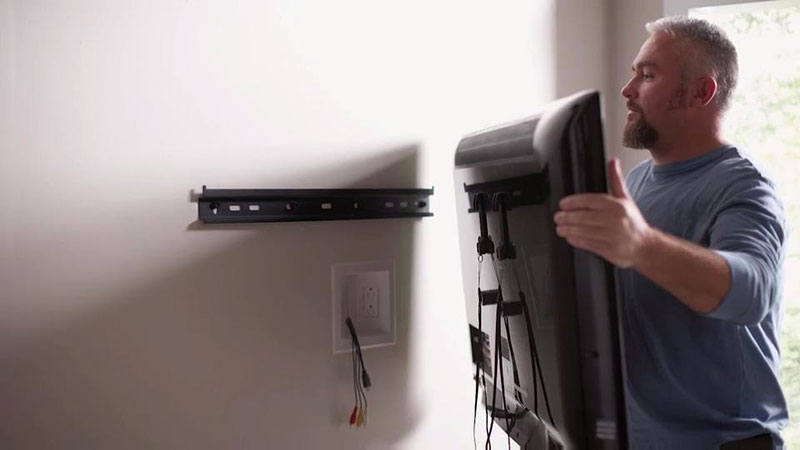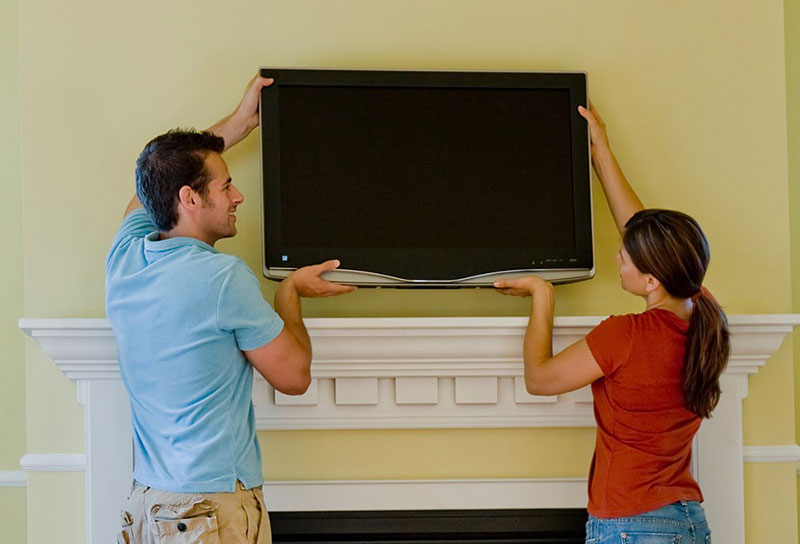Advertisement
A flat-screen television presents different types of challenges. The biggest problem with the older boxes-shaped TVs was the risk of falling to the ground. Televisions with flat screens offer better views, but they are also more fragile. Plasma televisions are not able to be moved or lowered. A lot of retailers will not even consider placing a television in the car due to its fragility.
This is just one instance of the many benefits professional movers can bring to your home. The real pros have moved, packed, and unpacked expensive and fragile items like flat-screen televisions many times over. They know how to keep your vehicle safe on the road. If you’re planning to move your flat-screen TV yourself, you should follow this guideline. The last thing you want as you settle in your new residence is to take down your damaged TV.
These are the most important packing recommendations for a flat-screen TV.
These are the top suggestions for moving safely a TV:
- Use the original TV box. Many TV manufacturers will advise you that using the original TV box is the most effective way to move your TV. This is a good reason to use the original packing material. It is possible to find somewhere that will keep the items if you just purchased a television. To ensure your TV’s safety during transport be sure to pack your TV exactly in its original box. Television boxes are huge, difficult to store, and even if you don’t have an enormous storage space at home, they’re easy to toss away. However, even if you keep them, the less durable packaging materials they are, the older they get. It is recommended to purchase TV boxes if your box was not sturdy enough to support the weight of your TV.
- Use a flat-screen TV. Many different moving companies and hardware stores provide a TV-moving kit. There are a variety of options available to choose from, so be sure to are aware of the dimensions of your TV. Flat-screen TV sets usually come with boxes that can accommodate an LCD TV that is up to 70 inches in width as well as 1 to 4 inches deep, and four protective edges of the foam. If you’re not certain which one to purchase consult your shipping expert for advice.
- Make preparations. Preparation is the first step in every business. All the tools and materials are needed. It is not a good idea to forget packing tape in the process of packing. These are the steps to follow when moving a flat-screen television.
- ropes
- screwdriver
- microfibre cloth
- markers and stickers
- bubble wrap
- scissors or cutting tools
- newspaper/wrapping paper
- blanket for transportation
- Remove and twist wires and accessories. Unplug the television from its power source. Take out any other devices that may be connected. The wires should be wrapped and joined. Mark the cables and wires to make it easier to identify them later more easily. To identify the contents, place everything in the box.
- Set the TV up. Flat screens are generally attached to the wall. Sometimes, the TV mounts are anchored too tightly, and it may be difficult to take them off. Whatever the thickness or heavy your TV’s screen is, it’s made from fragile materials. You will likely need to hire a helper. Ask a friend or family member to help you move a big television. Unscrew the screws while another person is supporting the TV. Label the screws by placing them inside plastic bags that could be sealed. Ask a friend to remove the TV from a stand and place it on a level surface.
- Clean the Television. Clean up all debris and dust from your TV using an easy dry microfiber cloth to protect your TV from scratches and avoid damaging its protective finish.
Dust particles can damage the screen of your TV and block the interior. You should inspect the unit for cracks and damage to make sure you’re able to identify any new cracks later, if necessary. - Guard your Television. Prior to transporting your flat-screen television put it on blankets. Wrap it in packing tape, sticky side out, then wrap it in bubble wrap. The wrap should adhere to the sticky side of the tape to avoid slippage.
- Put the TV in the box Some people have the original packaging from their television, while others don’t. It’s essential to have every packaging item, not only the original box if you still have the box. If you don’t have the foam inserts, the TV would spin and bounce in the box.
If you don’t have any or space to put in, then fill it with wrapping paper or newspapers. For large TVs, you can buy an online moving box or ask your carrier to supply one. - Keep the TV up straight. Once you’ve put the TV inside an enclosure or wrapped it in a blanket, ensure that you keep it in a straight position. Don’t place it on its back or put anything over it to prevent cracks, breaks, and permanent damage to your entertainment center.
- Move your TV carefully. It is essential to make sure that your television is compatible with the interior of your vehicle when you are planning to use it as a transport vehicle. It can be tucked away inside the trunk or placed on the back of the car. If you are putting the TV inside the moving truck ensure that the TV remains standing up and not on the ground.
It is essential to use a TV packaging kit. These boxes are designed to be moved in an upright position for your safety, the security of your television. This is the best way to move flat-screen TVs.

Final thoughts
It isn’t an easy task moving your flat-screen television from one location to the next. It’s doable when you follow the correct tips or get help from professional local movers in New York City.
Professional TV moving services are readily available at all times. Professional assistance is crucial for moving plasma screens or monitors. Asking your family and friends for help is not enough. Your safety and security of your electronics are contingent on the people you trust.

